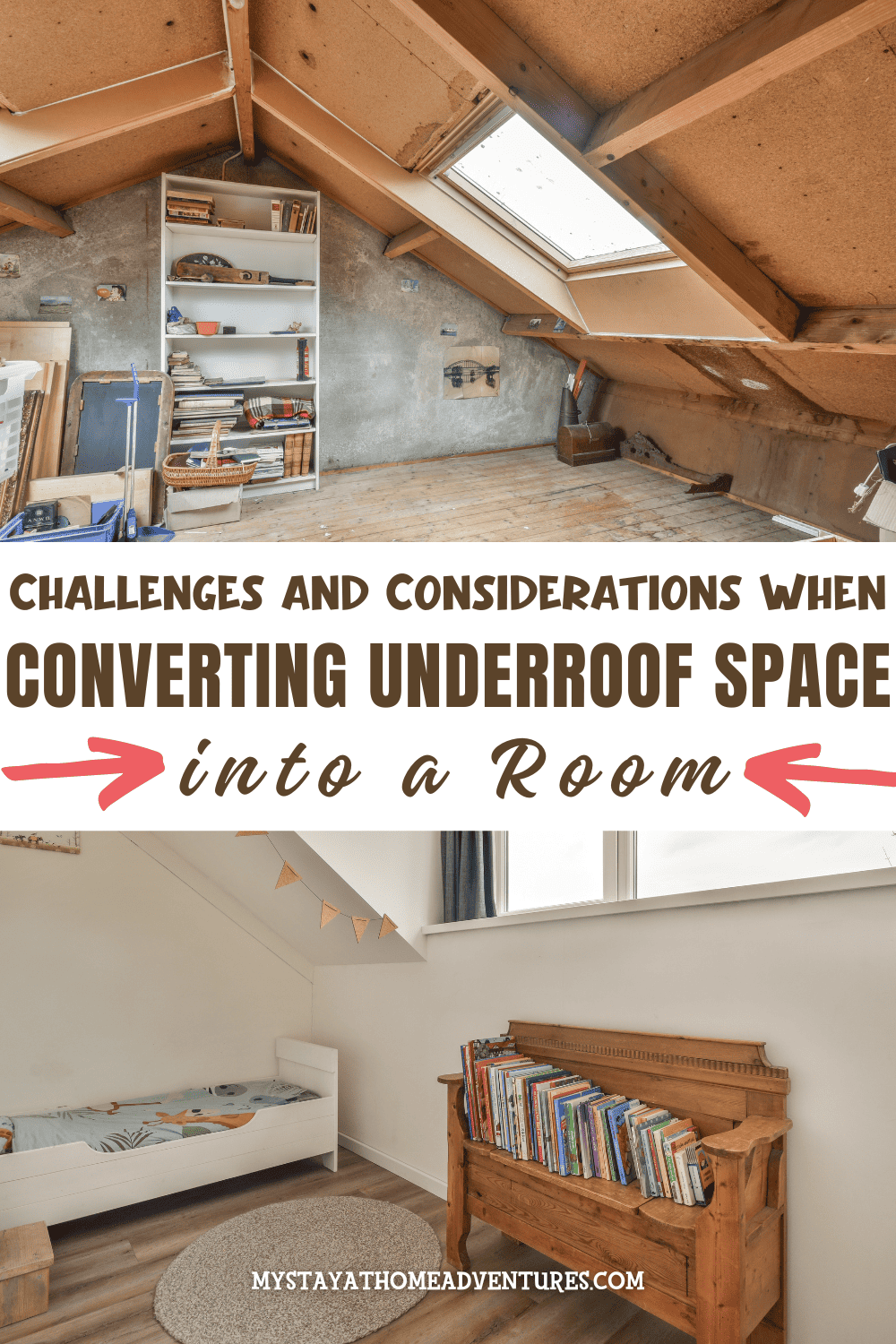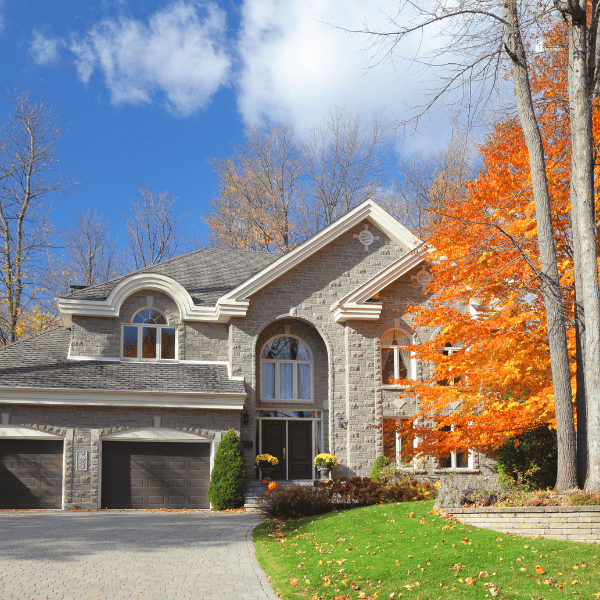Challenges and Considerations When Converting Underroof Space into a Room
This post may contain affiliate links which might earn us money. Please read my Disclosure and Privacy policies hereConverting the underroof area into a livable room can be an exciting project for homeowners seeking to expand their living space. However, this project comes with its own set of challenges and considerations that need to be carefully addressed to ensure a successful transformation. From insulation and unexpected leaks to dealing with unwanted guests and the logistics of furnishing and decorating, here's a comprehensive guide to navigating the obstacles of converting underroof space into a habitable room.

Lack of Insulation: Ensuring Comfort and Efficiency
One of the primary challenges when converting under roof space into a room is the lack of proper insulation. Underroof insulation plays a crucial role in regulating indoor temperature and energy efficiency. Investing in quality insulation and insulating features not only ensures a comfortable living environment but also leads to reduced energy bills for the entire household. By providing a barrier against heat loss in winter and heat gain in summer, under roof insulation contributes to maintaining a consistent indoor temperature, making the converted space more enjoyable year-round.
Unexpected Leaks: Identifying Roofing Issues
Working in the underroof area exposes homeowners to the possibility of encountering unexpected leaks and roofing issues. However, this presents an opportunity to detect and address potential problems before they escalate into major issues. Being vigilant for signs of leaks, such as water stains or dampness, can help homeowners identify and promptly repair any roof damage. Investing in professional roofing solutions not only safeguards the integrity of the home's structure but also contributes to energy efficiency and protects against costly water damage in the long run.
Unexpected Guests: Addressing Pest Infestations
The underroof area may harbor unwelcome guests such as bats, rodents, and birds, posing risks to both the home and occupants' health.
Bats
Discovering a bat infestation in the underroof area can be alarming and requires immediate attention. Bats are nocturnal creatures that seek refuge in dark, secluded spaces during the day, making under-roof areas an ideal habitat. Signs of bat infestations may include the presence of guano (bat droppings), squeaking or scratching noises, and stains caused by bat urine.
While bats play a crucial role in controlling insect populations, their presence in residential spaces poses health risks and structural concerns. Bat guano can harbor fungal spores that cause respiratory diseases such as histoplasmosis, posing a threat to occupants' health. Additionally, bats can cause damage to property by gnawing on wood, insulation, and electrical wiring.
Due to legal protections and safety considerations surrounding bat removal, it's essential to enlist the services of professional bat removal experts. Professionals have the expertise and specialized equipment necessary to safely and humanely remove bats from the underroof area while minimizing risks to both humans and wildlife.

Rodents
Rodents such as mice and rats are notorious for seeking shelter in under-roof areas, drawn by the warmth and darkness these spaces provide. Signs of rodent infestations may include gnaw marks on wood and electrical wiring, droppings, and nests made of shredded materials like paper or fabric.
Attempting to remove rodents on your own can be ineffective and even hazardous. DIY methods often fail to address the root cause of the infestation, leading to ongoing problems. Moreover, rodents carry diseases and can cause significant damage to property if not handled properly.
Professional rodent removal services are essential for effectively eliminating infestations and preventing their recurrence. Trained technicians have the knowledge, tools, and techniques to safely and efficiently remove rodents from underroof areas, ensuring the health and safety of occupants while safeguarding the integrity of the home.
Birds
Discovering birds nesting in the underroof area presents both immediate and long-term risks to your home. Besides the unsightly mess of droppings and nests, the accumulation of nesting materials can obstruct ventilation systems and pose fire hazards from nesting materials near electrical wiring. Additionally, chirping sounds may indicate an active nest. Professional removal services are essential to safely remove nests, deter future nesting, and mitigate potential structural damage and safety hazards.
Decluttering: Creating Space for Transformation
Often used as additional storage space, the underroof area may require decluttering to prepare for conversion into a room. Sorting through belongings left behind by previous owners and safely disposing of clutter is essential to creating a clean and functional space. Relocating items that are worth keeping to designated storage areas helps optimize space utilization and facilitates the transformation process.

Lack of Electricity or Plumbing: Enhancing Functionality
Expanding electrical and plumbing systems may be necessary to make the underroof area suitable for habitation. Professional electricians and plumbers should be consulted to ensure compliance with safety regulations and proper installation practices. Adding electricity and plumbing enhances the converted space's usability and provides essential amenities for everyday living.
Adding Natural Light: Enhancing Ambiance and Aesthetics
Introducing natural light into the underroof area through windows or skylights improves ambiance and visual appeal. However, cutting windows into the roof structure requires careful planning to preserve structural integrity and prevent leaks. Collaborating with experts ensures that the installation is carried out correctly, maximizing natural light while minimizing potential risks.
Furnishing: Optimizing Space Utilization
Bringing furniture into the underroof area poses challenges due to limited ceiling height and space constraints. Custom or bespoke furniture may be necessary to fit within the available dimensions and complement the room's layout. Careful consideration of furniture placement and selection helps maximize functionality and comfort in the converted space.
Decoration: Creating a Cozy Retreat
When decorating the underroof area, homeowners should consider factors such as paint colors, wallpapers, and overall aesthetics. Choosing light colors and reflective surfaces helps enhance the perception of space and brightness in rooms with low ceilings. Additionally, incorporating elements such as textiles, lighting fixtures, and décor accents adds personality and warmth to the newly transformed space.

Stairs and Access: Improving Accessibility
Transforming the underroof area into a habitable room may require upgrading access from a ladder to stairs for improved convenience and safety. Building new stairs in a limited space presents logistical challenges that require careful planning and expertise. Enhancing accessibility ensures that the converted room is functional and accessible for occupants of all ages and abilities.
Converting the underroof area into a room offers homeowners an opportunity to maximize their living space and enhance the functionality of their homes. It’s important to approach the project with the right mindset and knowledge to tackle all the potential challenges you’ll face. With careful planning, professional assistance, and attention to detail, the conversion process can result in a seamless and rewarding transformation.







